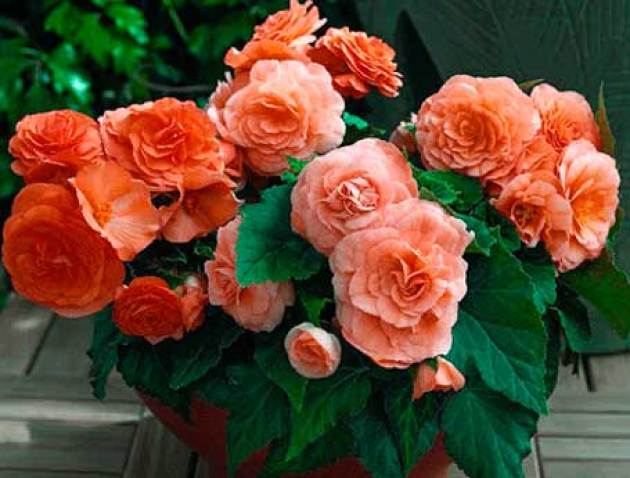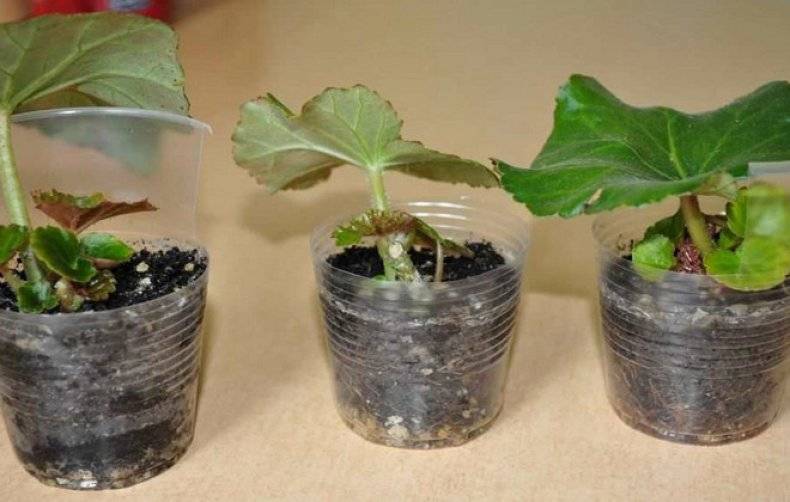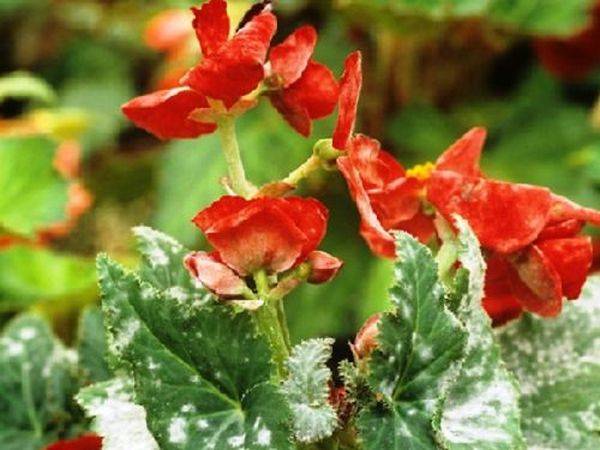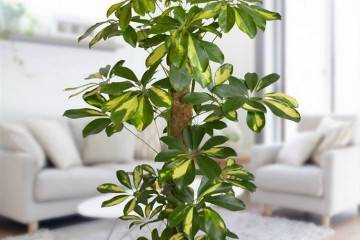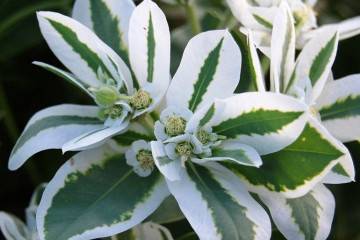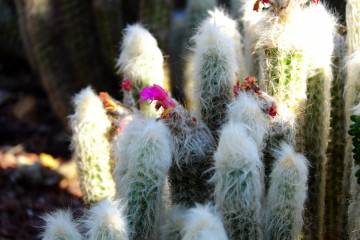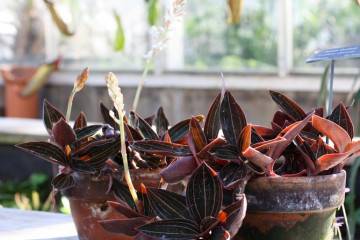Tuberous begonia - planting and care rules
Content:
Tuberous begonia is ideal for ennobling a summer cottage or a large loggia. Below is one of the most interesting and beautiful species of this family.
What does tuberous begonia look like, which family does it belong to?
Refers to complex hybrids, was specially bred by breeders. To date, more than a thousand hybrids are known around the world. Recently, scientists have divided them into three main types:
- Bushy;
- Decorative (emphasis on leaves);
- Decorative (emphasis on flowers).
The latter include plants that bloom more often in autumn or winter. However, among them there is a "terry" plant that will delight owners all year round. It is also worth highlighting the fact that among this family there are hybrids that look like small rosebuds.
Common varieties
Scientists identify 12 thousand varieties that differ not only in size, but also in the shape of the buds. Among the most popular are the following:
- Golden ball;
- Diva;
- Marmorata.
They differ not only in the shape of the flower, but also in the length of the stem. Many of them can often be found in garden plots.
Healing properties
Speaking about the positive properties of this plant, the following can be distinguished:
- leaf juice has a disinfecting effect;
- improves indoor air due to the fact that the plant "absorbs" unwanted toxins;
- infusions on flowers will relieve fatigue, increase immunity.
Briefly about the history of appearance
Begonia was first seen by Richard Pearce. The plant was widespread in tropical areas. Most of the species are found in Mexico. For several decades, scientists have established that there is a unique connection between plants that have been found in South America and Africa. It is possible that the plant was carried by ancestors, using it in various rituals and ceremonies.
Tuberous begonia: planting and care
For a plant to be healthy and beautiful, you must adhere to a strict sequence of care. Below are the basic rules that will exclude the appearance of diseases.
Temperature
Begonia, the correct planting of which is carried out at temperatures from 20 to 23 degrees, does not need growth accelerators. The tubers sprout themselves very quickly. Therefore, after the plant has given the first leaves, you can begin to gradually reduce the temperature - this will harden the plant before transferring it to the open ground.
Lighting
The southwest direction is considered ideal. When the plant is young or just beginning to bloom, it is undesirable for direct rays to fall. To prevent this from happening, the window is covered with ordinary film.
Watering
The main thing is that the tuber does not dry out in the summer heat.The average frequency of watering during this period is 3 times a week. Water is used only at room temperature. If the ecology is clean, you can use rain. In order not to multiply the number of bacteria, the liquid should not get on the flowers and leaves.
Spraying
Begonia should not be sprayed. Despite the fact that it is a tropical plant, excessive moisture ingress will cause the development of diseases. Flowers and leaves will start to rot.
Humidity
Particular attention should be paid to the microclimate during the hot period. If the air seems dry, you can spray the room. If the plant has already bloomed, it is necessary to reduce the water supply.
Priming
The soil must remain dry. The roots are very fragile and delicate, if too much moisture, the soil will become heavy and sticky, which will break the structure. This is important to consider when transplanting after waking up.
Tuberous begonia planting and feeding
Tuberous begonia loves fertile land. They feed the land from early summer to late autumn. Standard houseplant fertilizer can be purchased.
Features of care in winter, dormant period of tuberous begonia
Particular attention should be paid to young begonias. The first wintering is very important, since the plant has not yet gained the strength to withstand the cold. Young tubers are harvested for wintering, preferably with an earthen lump. Adults can stay in pots, but care must be taken to ensure their appearance. Place in heat, remove lifeless leaves.
When and how it blooms
Understanding when flowering occurs will help you organize your grooming system properly. It is worth reading the information below.
Types of flowers
The flowers of a tuberous plant can be small and large (in bulbous plants, the stem is long, the flowers are lush). Domestic species, which are most often chosen by owners, bloom from late summer to late autumn.
Flower shapes
The shape can be different, it also depends on the height of the stem. There are a huge number of varieties, the flowers of which are noticeably different from each other.
Flowering period
The flowering period also depends on the selected variety. There are quite a few varieties that bloom all year round. However, they are usually poisonous and cannot be used as traditional medicine.
How does it multiply
Breeding on your own is very difficult. Novice growers can use ready-made cuttings that will survive planting better.
Germinating seeds
It is advisable to purchase commercial seeds that are fully consistent with the norm. Each variety has a number of its own characteristics; many do not withstand too bright lighting and overflow. Before planting, you can use the old and effective method - germinate the seeds in a wet warm towel, then transplant them into the ground.
Rooting cuttings
Peat and humus are used for rooting. You can also use a mixture of peat, sand and soil.
Air layering
Begonia does not tolerate hot and dry air. To prevent wilting, it is advisable to moisturize it in a timely manner and ventilate the room.
Transfer
It all depends on the age of the plant. Cuttings are planted in peat and sand (peat pots), and adult plants are planted in sod and deciduous post with sand. Begonia faded and shed flowers, what to do next? - Make sure that the plant recovers and does not freeze.
Possible growing problems and diseases
Even house flowers have diseases that are best known in advance. You need to pay attention to the following nuances.
Drops buds and leaves
Here the reason may lie in waterlogging of the soil. Many do not know that drinking plenty of fluids is needed only during the flowering period.In normal cases, watering 1-2 times a week is sufficient as the soil dries up.
Leaves turn pale
An excess of salt or a lack of minerals. This problem can be easily solved by changing the soil. In rare cases, if small white spots appear on the leaves in the form of burns, you need to rearrange the plant away from the sun's rays.
The tips of the leaves dry
May be accompanied by too dry air or, on the contrary, by a strong draft. You need to pay attention to the microclimate.
The lower leaves fall
This is normal. Water often gets on them, so you need to monitor the correct watering.
Pests
Among the pests, there are quite a few insects that are ready to destroy the plant. Even poisonous species are attacked, especially if the flowers are in the open field. The first thing to do is to split the plant, and after each treatment, burn the debris and wash your hands. The method of struggle for each species is different. Therefore, you cannot apply the same instruction. Among the current pests, the following are distinguished:
- nematode - covers the leaves with small cobwebs, after which the inflorescences fall off and the plant completely dies. The most interesting thing is that there is no cure for this disease. Therefore, in the autumn, it is advisable to warm up peat pots with young plants;
- spider mite - spreads quickly, a frequent visitor in dry rooms. You can get rid of the infusion of onion peel;
- aphid - affects in the spring, when the plant is just beginning to recover. An infusion of pyrethrum will help.
Signs and superstitions
If we consider positive signs, we can highlight:
- a healthy flower that has filled the whole room with aroma promises an improvement in well-being;
- many owners claim that having at least one flower pot in the house will call on true love. Therefore, for those who have not yet acquired a second half, it is advisable to plant this plant in their area or in an apartment;
- an abundant and beautiful plant promises the arrival of money in the house;
- lush leaves mean that the house will soon be replenished;
- flowers are often recommended to be placed in a room where a sick person is. The emitted odor and substances have a beneficial effect on recovery.
Additionally, negative superstitions associated with begonia can be distinguished:
- if, with good care, the plant dies, then you should think about the situation in the family. Very often, begonia dies on the background of stress due to abuse and negativity;
- if the flowers turn white - it is worth waiting for bad news or gossip;
- if the bush has withered for no reason, health will deteriorate.
In general, tuberous begonia requires special care. The plant needs a timely transplant, this is the only way to grow it healthy and beautiful.
